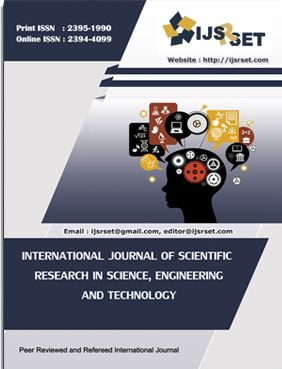Simulation and Analysis of Wind-Solar Hybrid Energy Conversion System
DOI:
https://doi.org/10.32628/IJSRSET2512515Keywords:
Solar PV, wind energy system, MPPT, hybrid power system, simulation, RESAbstract
Solar and wind are the most prevalent resources due to their accessibility and the simplicity of their conversion into power. Each renewable resource necessitates a DC/DC boost converter with MPPT management for power generation. The maximum power point tracking (MPPT) technology is utilized to achieve optimal efficiency in photovoltaic (PV) and wind energy systems. Perturbation and Observation-MPPT approach is employed in photovoltaic systems where direct current voltage serves as the perturbation variable. In wind energy systems, a perturbation variable in the form of direct current is utilized in the modified perturb and observe maximum power point tracking algorithm. The modified perturb and observe technique exhibits stability and rapid tracking in response to abrupt changes in wind speed. The greatest Power Point Tracking (MPPT) technique employed with a boost converter optimally takes the greatest power from the available source. The simulation of both renewable energy sources is conducted independently in PSIM 9.0 utilizing various MPPT approaches.
📊 Article Downloads
References
P. Roy, J. He, T. Zhao and Y. V. Singh, “Recent Advances of Wind-Solar Hybrid Renewable Energy Systems for Power Generation: A Review,” in IEEE Open Journal of the Industrial Electronics Society, vol. 3, pp. 81-104, 2022, doi: 10.1109/OJIES.2022.3144093. DOI: https://doi.org/10.1109/OJIES.2022.3144093
Reddy, D. & Satyanarayana, S. & Ganesh, Vaishnavi. (2018). Design of Hybrid Solar Wind Energy System in a Microgrid with MPPT Techiques. International Journal of Electrical and Computer Engineering. 81. 730-740. 10.11591/ijece.v8i2.pp730-740. DOI: https://doi.org/10.11591/ijece.v8i2.pp730-740
T.Esram and P.L.Chapman, “Comparison of photovoltaic array maximum power point tracking techniques,” IEEE Trans. Energy Converse., vol.22, no.2, pp.439-449, June 2007. DOI: https://doi.org/10.1109/TEC.2006.874230
Ahmed, N.M., Farghally, H.M., Fahmy, F.H., “Optimal sizing and economical analysis of PV-wind hybrid power system for water irrigation using genetic algorithm,” 2017 International Journal of Electrical and Computer Engineering, 7 (4), pp. 1797-1814. DOI: 10.11591/ijece.v7i4.pp1797-1814 DOI: https://doi.org/10.11591/ijece.v7i4.pp1797-1814
Wijaya, F.D., Pribadi, K.D., Sarjiya, “Maximum power point tracking using particle swarm optimization algorithm for hybrid wind-tidal harvesting system on the south coast of Java,” 2017 International Journal of Electrical and Computer Engineering, 7 (2), pp. 659-666, DOI: 10.11591/ijece.v7i2.pp659-666. DOI: https://doi.org/10.11591/ijece.v7i2.pp659-666
B. K. Sovacool, “The intermittency of wind, solar, and renewable electricity generators: Technical barrier or rhetorical excuse?,” Utilities Policy, vol. 17, no. 3-4, pp. 288–296, 2009. DOI: https://doi.org/10.1016/j.jup.2008.07.001
Akhilesh P. Patil, Rambabu A. Vatti and Anuja S. Morankar, ‘Simulation of Wind Solar Hybrid Systems Using PSIM’, International.
Toshiro Hirose and Hirofumi Matsuo, ‘Standalone Hybrid Wind-Solar Power Generation System Applying Dump Power Control without Dump Load’ IEEE Transaction on Industrial Electronics, Vol. 59, No. 2, February 2012. DOI: https://doi.org/10.1109/TIE.2011.2159692
Downloads
Published
Issue
Section
License
Copyright (c) 2025 International Journal of Scientific Research in Science, Engineering and Technology

This work is licensed under a Creative Commons Attribution 4.0 International License.




